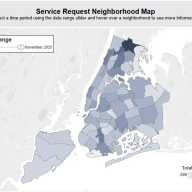Community opposition to the proposal by Cornerstone Treatment Facilities Network to transfer its drug and alcohol treatment facility from Manhattan to the site formerly occupied by St. Joseph's hospital in Flushing continues to mount before a December 6 meeting between Cornerstone and the local community.
“I've met with these people,” Shirley B. Weinstein, President of the Mid-Queens Community Council said. “They're nice people, they think they're there to do good, but they're there to make money.”
Weinstein was commenting on the type of treatment offered by Cornerstone which provides short-term residential care for seven to thirty days to patients with insurance. “Once their time is up, and their insurance runs out, that's it. They're on the streets no matter their condition,” Weinstein said.
The Mid-Queens Community Council is not alone in its opposition to the facility. Allan Warshaviak, chairperson of Community Board 8 wrote to Queens Borough President Helen Marshall objecting to the proposed facility in early November. He cited other similar facilities in the area, including Queens Hospital Center, which has its own detoxification unit in addition to a methadone program and the Aurora Concept, a long-term addiction treatment program originally started by parents of drug-addicted children that was subsequently taken over by the city.
Concern for the neighborhood is compounded by the proximity of a nursery school, a church, a parochial school and a synagogue in the immediate vicinity of St. Joseph's.
District manager of Community Board 8, Diane Cohen, is more philosophical. “The board will be meeting with representatives of the proposed facility. I'll meet with them, and hear what they have to say.” Beyond that, Cohen had no comment other than to reiterate that Warshaviak's position, namely, “We are not amenable to the proposed use of this facility,” is the official position of Community Board 8.
Weinstein was more forthright: “I resent that this is a short-term facility with no follow up. I resent that there are already two other similar facilities in the immediate neighborhood. They may give them [patients] a list of other facilities near where they live when they discharge them, but that's not the way to treat people. Once drug addicts are on the street who knows how they'll behave,” she said.
































